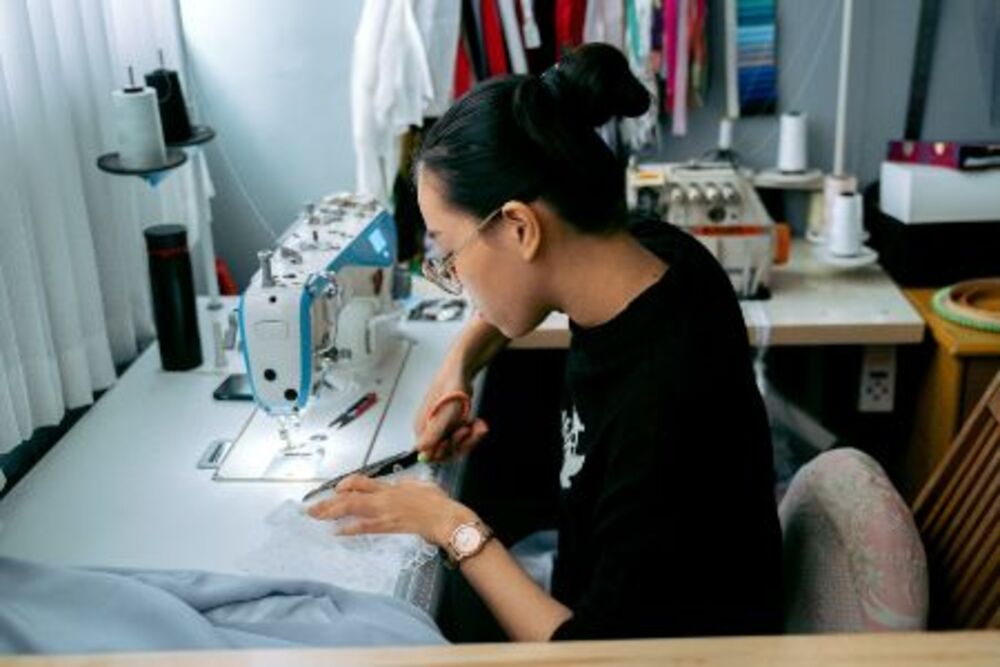Have you just purchased your first sewing machine or been given one as a present? In this course you’ll learn about essential parts of a home sewing machine as well as practicing basic stitches.
Your machine may come with basic (and often disinteresting) instructions, including line drawings, numbers, and arrows.
Threading
One of the first tasks you must learn with your sewing machine is how to thread it. Each brand may differ slightly in this respect; therefore, always consult its user manual for detailed steps on threading it correctly. Look out for the best embroidery machine for beginners.
The bobbin holds the lower thread that connects with the upper thread to produce stitches, making it one of the key elements in sewing process. Without an appropriately threaded bobbin, your machine may not stitch correctly and could even break.
The bobbin can be metal or plastic and comes with your machine. Additionally, you should receive extra bobbins just in case any run out during initial threading process. Once filled with thread that matches fabric being sewn on, fill up to fill level indicated on machine manual bobbin case to avoid bulged bobbins that don’t fit accurately resulting in disruption of overall process.
Stitching
Sewing machines’ main feature is stitching; that is, connecting one thread line with another. There are various stitch types and variations available to sewists; the most basic and effective being straight line stitching which can be used to sew everything from seams to decorative elements.
Different machines offer various methods to feed fabric into them. While home machines typically feature multiple options for feeding fabric into them, industrial sewing machines may only support certain stitches or operations (e.g. bar tacking and buttonhole making).
Before starting to sew, ensure your machine is threaded correctly. Most machines provide instructions and diagrams right on their bodies or online for guidance. Place fabric on a table or surface, with an allowance guideline printed onto it if possible – this will allow the machine to guide its sewing smoothly.
Adjusting
Sewing machines offer you the versatility of crafting projects at home with relative ease. However, sewing machines sometimes need adjustments for optimal performance on different fabrics. You can make these adjustments without taking your machine to a service center by balancing top thread strength with that of the bobbin thread.
Your sewing machine’s tension can typically be controlled with one dial. Your bobbin case spring and flat bobbin-case screw provide additional regulation of pressure applied as thread emerges from its case – essential components to maintaining an even and balanced bobbin thread load.
Before fiddling with the dials on your machine, first make sure that everything else is in order, such as making sure that the bobbin is filled evenly and threaded both the needle and bobbin properly. Furthermore, keep in mind that each brand and model may require slightly different approaches when it comes to adjusting its dials; always consult the owner’s manual for additional guidance regarding your specific model.
Cleaning
Many sewing machine issues arise due to build-up of lint, thread ends, and dust that accumulates on working parts. A regular cleaning regimen should help ward off this potential threat and keep these problems at bay.
Start by brushing away any lint that has collected on the bobbin case, needle plate and needle area of your machine. A can of compressed air may help with particularly stubborn or persistent pieces. Once all that lint has been cleared away, use a small screwdriver or other tool to carefully unthread and take apart your throat plate following instructions provided in your manual.
Clean and lubricate your machine according to its manual for optimal operation. Be sure only to use oil specified for your model; alternatively kerosene-soaked rags can help remove excess grease from hard-to-reach places like gears. Finally, apply small amounts of sewing machine oil as specified by your manual.



